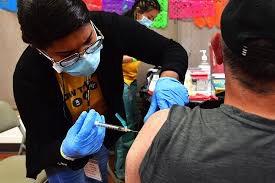 Currently, there is no federal regulation mandating reporting of cases of COVID to the U. S. Centers for Disease Control and Prevention. With the extensive use of home diagnostic kits, most asymptomatic and mild cases do not enter the CDC database.
Currently, there is no federal regulation mandating reporting of cases of COVID to the U. S. Centers for Disease Control and Prevention. With the extensive use of home diagnostic kits, most asymptomatic and mild cases do not enter the CDC database.
Effective March 8th, the cumulative number of U.S. cases of COVID, since inception of the pandemic, has attained 103.7 million. This figure is an undercount with, possibly more than one third of the population having been infected. The cumulative death toll of 1.1 million also understates the impact of COVID since individual states imposed different criteria for certification of cause of death.
Given the obvious deficiencies in counting cases, the CDC recorded 170,576 incident infections during the week of March 8th, down 15 percent from the previous week. For the same week, 1,862 fatalities were recorded, down 19 percent. Hospital admissions are a relatively accurate method of determining trends in COVID infection since diagnostic procedures are documented. There was a ten percent decrease in new admissions and a corresponding decline in the 23,112 hospitalized during the week of March 8th. Concurrently there were 3,084 patients with COVID in Intensive Care Units. Most of the hospitalizations involved the elderly, the non-vaccinated and those with predisposing conditions.
The Omicron sub-lineages XBB.1.5 represented 90 percent of all sequenced viruses isolated from new cases with the remainder identified as sub-variants of Omicron SARS-CoV-2 virus.
Clearly, the impact of COVID is waning but the infection is taking a toll on the elderly and the still susceptible non-vaccinated or incompletely vaccinated in our population.
Recent epidemiological studies in South Korea have shown that acceptable protection from severe, clinical symptoms and hospitalization can be attained with two initial mRNA vaccines followed by the administration of two boosters. In the interests of simplicity it appears that the FDA will recommend a single annual booster. In contrast, the study conducted in South Korean recommended boosting at six-month intervals rather than as a single, annual dose administered concurrently with the seasonal influenza vaccine in the fall as contemplated for the U.S.